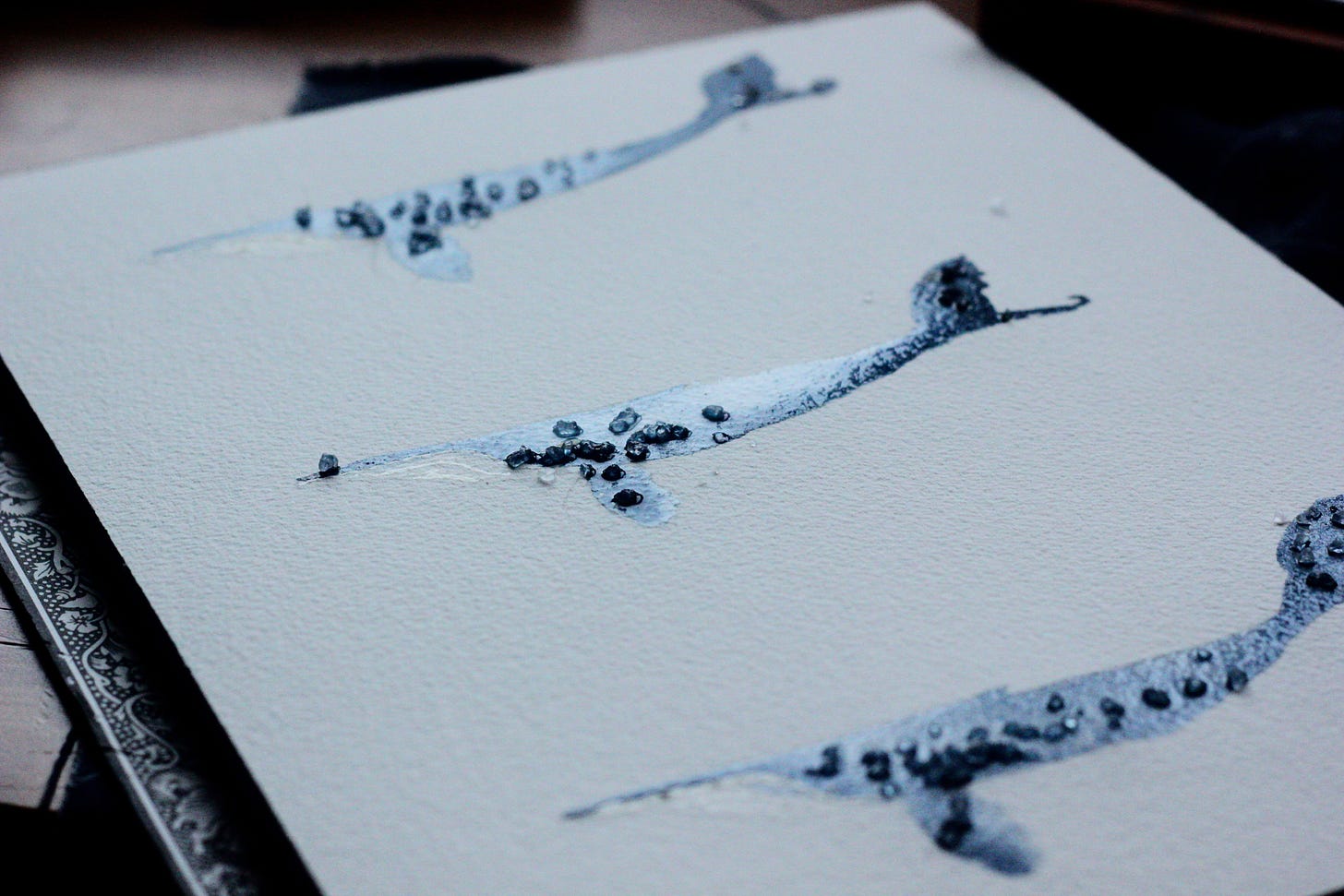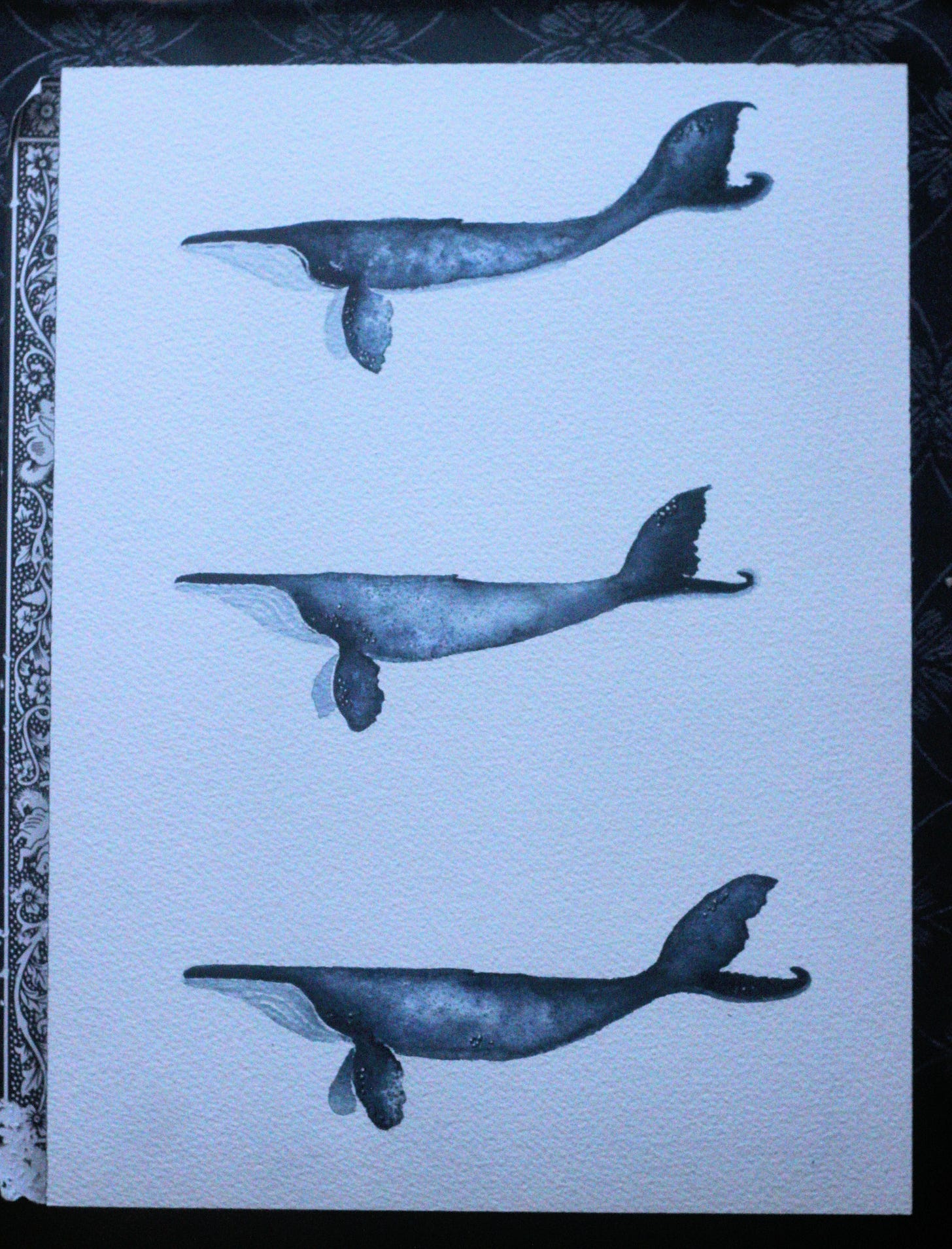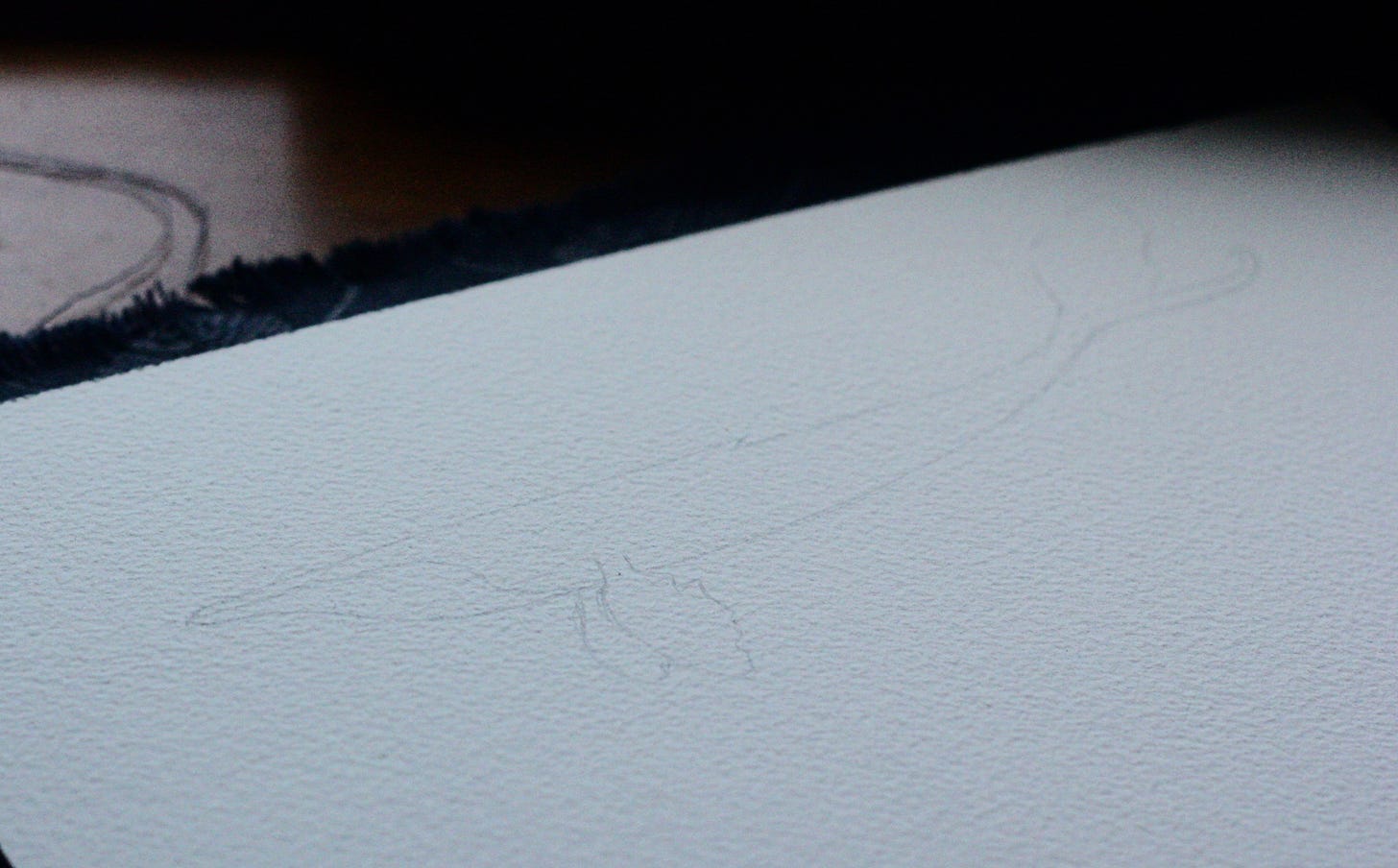Because Creativity - Watercolour and whale song, with Rebecca Hooper
"a lesson in accepting a liquidity of vision, a lack of control"
Dear Creatives,
Welcome to another Because Creativity guest letter, where we pause from life’s endless demands for a short interlude, to dwell on creativity, imagination, and beauty. For joy alone.
It took my reading just one of
’s essays — The Owl-Eyed Fisherman —for me to fall deeply in love with her writing. It was the opening to the Kindness Chronicles, a series of stories that offer a quiet defiance in a world often overwhelmed by darkness.Rebecca is a writer and evolutionary biologist with a PhD in animal cognition, and her letters “about life and death, land and sea, science, art, and finding joy”, are extraordinary.
When I read Rebecca’s words, I feel as if I am there, drifting on the waves and exploring the kelp forests. I can feel the see breeze and taste the salt. I am swallowed whole by the planetary eyes of seals and heartbroken by the suffering and death of an Eider starved by the plastic net caught around it’s throat. I am captivated by the way her words hold both sorrow and wonder, science and soul.
I was honoured when Rebecca lent her voice to Birds of Prayer — a collaborative piece in which several writers, including Rebecca, narrated excerpts of their own work, which I wove together into a shared audio experience. And I was utterly delighted when she agreed to share a guest letter for Because Creativity.
Rebecca’s letter traces the quiet passage of art across the generations, brushes and pencils once held in familial hands, guiding new creative beginnings, and the slow discovery of creativity as an attentive, intuitive act, unbound from outcome. It is also, as ever with Rebecca’s work, about something deeper: relationship. With water and whale-song. With memory and material. With the subtle influence of mood and how it seeps into colour, shape, and sentence alike.
This is a letter of driftwood, weathered and shaped by sea and story.

When my great aunt Janet passed away after a long journey with dementia in which she—an incredibly talented artist—lost all desire to create, I inherited many of her art supplies. Paintbrushes, paints, paper, canvases, pencils.
It was a little overwhelming to have so much equipment at my fingertips, and for a long time I didn’t touch the supplies. I felt a responsibility to create good art, art that she, and my artist grandparents who had also recently passed away, might be proud of. And I had no idea how to do this.
Writing taught me how. Before I began painting, I started to seriously dedicate myself to writing as an artform. I learned to stop caring about the product and start caring about the process—as in, how to pay close attention to the act of creation, how to make each sentence sing the way I wanted it to sing, how to use the part of the brain that knows how to do this, a subconscious part of the brain that is completely shut off from the outside world and others’ perceptions.
It took me a long time to learn how to do this with writing (it is still something I am learning), but once I had the foundations in place I understood that this is what I needed to do with painting, too. I needed to stop thinking about the final product, and to instead pay attention to process.
When I understood this, I felt ready to sit down with Janet’s supplies.
It was the watercolours that called to me first, and I soon learnt some important things about painting with this medium—that, like writing, painting with watercolours is a conversation between creating and listening, a democracy rather than a dictatorship, a lesson in accepting a liquidity of vision, a lack of control.
Once I had accepted this, I understood that painting is as much about play as writing is. It is an act of co-creation between paint, water, body and mind in the same way that when I write fiction, I am co-creating a story with the characters. One way or the other, I am taken on a journey that is beyond self.
For my Substack, I wanted to gift each founding member with an original watercolour, but I realised that to make this sustainable I would need to paint the same thing each year—something I could paint that would be unique for each member, but that did not take too much experimentation or time. For this first year of my Substack, I decided to paint humpback whales.
Painting the same creature over and over has taught me so much about my practice, and while writing taught me how to start painting, painting also teaches me about writing. For example, it has made me realise that my mood impacts my art in substantial ways. In days with a little darkness, my whales are solid and rich and imposing. On quiet and calm days, they are light and a little ethereal. On days full of energy, they are bursts of movement and colour.
Since understanding this in the whales, I see it too in my writing. The rhythms of my sentences, even the words I use, reflect my internal state. This interests me, and it’s something I want to explore more with both painting and with words.
I have so much to learn about painting with watercolours. I feel that I am right at the beginning of a lifelong journey, still learning the foundations, still understanding the relationship between my mind, my body, the brush, the paper, the paint. But as with all good relationships, it is a rich journey, a synergistic one, and one that—in surprising ways—helps me understand myself a little better.


Thank you, Rebecca, so much, for this beautiful reminder that creativity is not a thing inherited whole or finished, but something to be met again and again with presence, with reverence, and with curiosity.
Above my desk hangs one of Rebecca’s whale paintings, strung from hessian cord and surrounded by shells and seaside oddments to help her feel at home. I named her Winnifred. I think she must have been painted on a quiet and calm day. Her presence is light and a little ethereal, a reminder of shared creative currents, and a tangible connection that links us across almost the full length of these British Isles — from my southern woods and river paths, to Rebecca’s island in the north, held between two seas.
Rebecca writes from her home in the Orkney Islands, “tucked between the steely North Sea and the wild Atlantic”, and if you haven’t yet discovered her essays, I encourage you to find a quiet moment and let her words lead you to wildness and wonder, and the wide, weathered edges of the world.
With wishes for endless inspiration,














Two beautiful souls in one place ! Thank you both for always painting pictures with words that linger on through my day, tugging unexpected sighs of pleasure and awe from my breath.
Emily, Winnifred looks so perfect in her gorgeous shelled home! 🐋x
Winnifred looks right at home and so beautifully ador(n)ed! ❤️😍 you’ve captivated Rebecca’s writing so perfectly: “sorrow and wonder, science and soul.” I share your fascination for her writing.